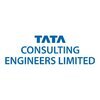
i
Afcons
Infrastructure
Proud winner of ABECA 2025 - AmbitionBox Employee Choice Awards
Filter interviews by
Afcons Infrastructure QA QC Engineer Interview Questions and Answers
9 Interview questions
Durability of concrete depends on various factors such as quality of materials, mix design, curing, and environmental conditions.
Durability is the ability of concrete to resist weathering action, chemical attack, and abrasion.
Factors affecting durability include water-cement ratio, air content, aggregate quality, and curing conditions.
Concrete with low water-cement ratio and proper curing can have a lifespan of ov...
A mix design for concrete with a compressive strength of 4000 psi.
Use Portland cement type I or II
Aggregate should be a mix of coarse and fine aggregates
Water-cement ratio should be between 0.4 to 0.6
Additives such as fly ash or silica fume can be used to improve strength and durability
Explaining tolerance of cover block, number of samples in cubes and soil filling in layers.
Tolerance of cover block is the permissible deviation from the specified dimension.
We take 03nos of pieces in cubes for steel testing to ensure accuracy and consistency.
Soil filling in maximum 300mm layer is done to ensure proper compaction and avoid settlement issues.
I am proficient in ASME and ISO standards.
I have extensive knowledge of ASME B31.3 and B31.1 codes for piping and pressure vessels.
I am also well-versed in ISO 9001 quality management system standards.
I have experience in implementing and maintaining quality control procedures based on these standards.
I am familiar with IS and BSEN standards, but not as proficient as ASME and ISO.
Bolts tightening procedure involves following a specific torque value and sequence to ensure proper fastening of bolts.
Check the torque value specified in the design or manual
Use a torque wrench to tighten the bolts to the specified value
Tighten the bolts in a specific sequence to ensure even distribution of load
Recheck the torque value after tightening all bolts
Record the torque value and sequence for future refe...
Process piping works involve the installation, inspection, and maintenance of pipes used in industrial processes.
Process piping works include the design, fabrication, and installation of pipes for conveying fluids or gases in industrial settings.
QA QC engineers ensure that the piping systems meet the required standards and specifications.
Inspection and testing of process piping is done to check for leaks, pressure...
Hydrotest and pneumatic test are methods used to test the integrity of piping systems.
Hydrotest involves filling the piping system with water and pressurizing it to a specified level for a set duration.
Pneumatic test involves filling the piping system with compressed air or nitrogen and pressurizing it to a specified level for a set duration.
Both tests are used to ensure that the piping system can withstand the ex...
Site validation in specification knowledge and procedures for field work is essential for QA QC Engineers.
Understanding the specifications and requirements for each site is crucial
Following established procedures and protocols for field work
Ensuring that all work is in compliance with industry standards and regulations
Regularly updating knowledge on new technologies and best practices
Documenting all validation pro...
If 02 pieces pass or 01 falls within +10mm tolerance of cover block, it is considered a sample pass.
A tolerance of +10mm is allowed for cover block.
If 02 pieces pass or 01 falls within the tolerance limit, it is considered a sample pass.
If more than 01 piece falls outside the tolerance limit, it is considered a sample fail.
Afcons Infrastructure QA QC Engineer Interview Experiences
6 interviews found
I applied via Company Website and was interviewed in Jun 2023. There were 6 interview rounds.

(2 Questions)
- Q1. Interview with the CV by asking the field role and responsibilties.
- Q2. Validation for the client interview.
Meetings with the project managers and department head with the clients.
(1 Question)
- Q1. Department head client validation test the manager.
(1 Question)
- Q1. Written test from the technical choice.
(1 Question)
- Q1. Evey site validation in specification knowledge and procedures for field work.
- Ans.
Site validation in specification knowledge and procedures for field work is essential for QA QC Engineers.
Understanding the specifications and requirements for each site is crucial
Following established procedures and protocols for field work
Ensuring that all work is in compliance with industry standards and regulations
Regularly updating knowledge on new technologies and best practices
Documenting all validation processe...
(1 Question)
- Q1. Salary negotiation properly

(3 Questions)
- Q1. What you have learnt from your past experience as a QA/QC Engineer.
- Ans.
I gained valuable insights into quality assurance processes, team collaboration, and the importance of continuous improvement.
Developed a keen eye for detail, which helped in identifying defects early in the development cycle.
Implemented automated testing tools, reducing testing time by 30% and increasing test coverage.
Collaborated closely with cross-functional teams, enhancing communication and understanding of projec...
- Q2. In which code you are proficient, ASME, IS, BSEN, ISO standerd.
- Ans.
I am proficient in ASME and ISO standards.
I have extensive knowledge of ASME B31.3 and B31.1 codes for piping and pressure vessels.
I am also well-versed in ISO 9001 quality management system standards.
I have experience in implementing and maintaining quality control procedures based on these standards.
I am familiar with IS and BSEN standards, but not as proficient as ASME and ISO.
- Q3. Tell about your major achievements.
- Ans.
Successfully led quality assurance initiatives that improved product reliability and reduced defects by 30%.
Implemented a new testing framework that increased test coverage by 40%.
Reduced defect rates by 30% through rigorous testing and process improvements.
Led a cross-functional team to achieve ISO 9001 certification, enhancing overall quality management.
Developed automated testing scripts that decreased testing time ...
(1 Question)
- Q1. Tell us About your previous exprience..
Interview Preparation Tips
I applied via Company Website and was interviewed before Oct 2021. There were 2 interview rounds.

(2 Questions)
- Q1. What is tolerance of Cover Block? Why we take 03nos of pieces(01 sample) in cubes, steel testing ? Why we are soil filling in maximum 300mm layer?
- Q2. +10mm tolerance of cover block. Suppose 02 pieces pass or 01 fall so in this situation we are consider sample pass.
- Ans.
If 02 pieces pass or 01 falls within +10mm tolerance of cover block, it is considered a sample pass.
A tolerance of +10mm is allowed for cover block.
If 02 pieces pass or 01 falls within the tolerance limit, it is considered a sample pass.
If more than 01 piece falls outside the tolerance limit, it is considered a sample fail.
Interview Preparation Tips
I applied via Walk-in and was interviewed in Jan 2021. There were 3 interview rounds.
Interview Questionnaire
2 Questions
- Q1. Write one mix design?
- Ans.
A mix design for concrete with a compressive strength of 4000 psi.
Use Portland cement type I or II
Aggregate should be a mix of coarse and fine aggregates
Water-cement ratio should be between 0.4 to 0.6
Additives such as fly ash or silica fume can be used to improve strength and durability
- Q2. What is the durability of concrete?
Interview Preparation Tips
Interview Questionnaire
11 Questions
- Q1. Structural welding codes, Bridge welding codes
- Q2. Process piping works
- Ans.
Process piping works involve the installation, inspection, and maintenance of pipes used in industrial processes.
Process piping works include the design, fabrication, and installation of pipes for conveying fluids or gases in industrial settings.
QA QC engineers ensure that the piping systems meet the required standards and specifications.
Inspection and testing of process piping is done to check for leaks, pressure, and...
- Q3. Bolts tightening procedure
- Ans.
Bolts tightening procedure involves following a specific torque value and sequence to ensure proper fastening of bolts.
Check the torque value specified in the design or manual
Use a torque wrench to tighten the bolts to the specified value
Tighten the bolts in a specific sequence to ensure even distribution of load
Recheck the torque value after tightening all bolts
Record the torque value and sequence for future reference
- Q4. Bolts testing and torqueing sequences.
- Q5. Hydrotest and pneumatic test for piping
- Ans.
Hydrotest and pneumatic test are methods used to test the integrity of piping systems.
Hydrotest involves filling the piping system with water and pressurizing it to a specified level for a set duration.
Pneumatic test involves filling the piping system with compressed air or nitrogen and pressurizing it to a specified level for a set duration.
Both tests are used to ensure that the piping system can withstand the expecte...
- Q6. Able to refer codes and procedures.
- Q7. Painting knowledge
- Q8. Able to repair painted surface area.
- Q9. Clients and inspection agency
- Q10. Clients faced interviews.
- Q11. Job training
Top trending discussions






Interview questions from similar companies

Senior Engineer Interview Questions & Answers
Kalpataru Projects Internationalposted on 4 Jan 2021
I applied via Naukri.com and was interviewed in Jul 2020. There were 3 interview rounds.
Interview Questionnaire
1 Question
- Q1. About structur like, Shuttring and steel dia wise wait per/m special gravity of cement & aggregate, related QC
Interview Preparation Tips

Senior Engineer Interview Questions & Answers
Kalpataru Projects Internationalposted on 2 Sep 2021
I applied via Campus Placement and was interviewed before Sep 2020. There was 1 interview round.
Interview Questionnaire
1 Question
- Q1. Basic questions
Interview Preparation Tips

Senior Engineer Interview Questions & Answers
Nagarjuna Construction Companyposted on 30 Aug 2021
I applied via Recruitment Consultant and was interviewed before Aug 2020. There were 5 interview rounds.
Interview Questionnaire
1 Question
- Q1. Machinery maintenance Dpr maintenance,local purchasing,
Interview Preparation Tips

I applied via Recruitment Consultant and was interviewed in Nov 2019. There were 3 interview rounds.
Interview Questionnaire
3 Questions
- Q1. My past work related questions
- Q2. Bbs, reinforcement formula
- Q3. Concrete realated
Interview Preparation Tips
Afcons Infrastructure Interview FAQs
Tell us how to improve this page.
Afcons Infrastructure Interviews By Designations
- Afcons Infrastructure Senior Engineer Interview Questions
- Afcons Infrastructure Planning Engineer Interview Questions
- Afcons Infrastructure QA QC Engineer Interview Questions
- Afcons Infrastructure Civil Execution Engineer Interview Questions
- Afcons Infrastructure Civil Engineer Interview Questions
- Afcons Infrastructure Site Engineer Interview Questions
- Afcons Infrastructure Store Keeper Interview Questions
- Afcons Infrastructure Civil Foreman Interview Questions
- Show more
Interview Questions for Popular Designations
Overall Interview Experience Rating
based on 2 interview experiences
Difficulty level
Duration
QA QC Engineer Interview Questions from Similar Companies
Afcons Infrastructure QA QC Engineer Reviews and Ratings
based on 42 reviews
Rating in categories
|
Senior Engineer
408
salaries
| ₹7.6 L/yr - ₹13.3 L/yr |
|
Planning Engineer
194
salaries
| ₹4.8 L/yr - ₹10 L/yr |
|
Civil Engineer
193
salaries
| ₹3.6 L/yr - ₹8.4 L/yr |
|
Executive Engineer
180
salaries
| ₹4.1 L/yr - ₹10 L/yr |
|
Assistant Manager
174
salaries
| ₹9 L/yr - ₹15.5 L/yr |

Tata Projects

Shapoorji Pallonji Group

Kalpataru Projects International

Nagarjuna Construction Company
- Home >
- Interviews >
- Afcons Infrastructure Interview Questions













